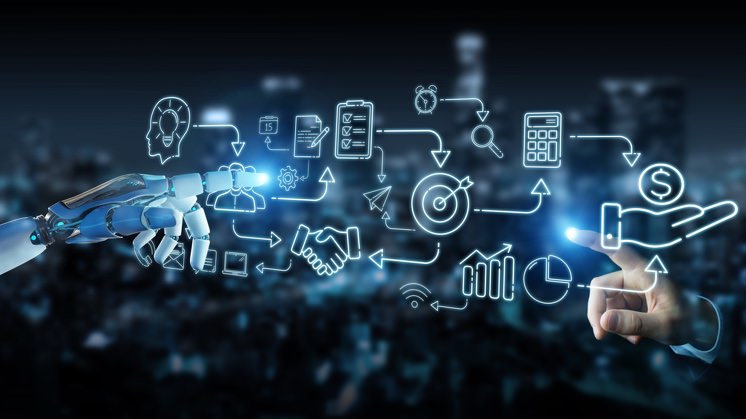In the modern world, digital innovation is one of the driving forces behind economic growth, business transformation, and societal progress. From artificial intelligence (AI) and machine learning (ML) to blockchain and the Internet of Things (IoT), digital technologies are reshaping industries, improving efficiencies, and creating new opportunities across the globe. Businesses are now expected to continuously evolve, adopt new technologies, and adapt to fast-changing consumer expectations, with digital innovation playing a central role. This article delves into the world of digital innovation, exploring key technologies, industry impacts, and future trends.

What Is Digital Innovation?
Digital innovation refers to the process of utilizing digital technologies to create new or enhanced products, services, or business models. It encompasses a wide range of digital tools and processes aimed at improving operational efficiency, customer engagement, and overall business performance. Digital innovation is not just about adopting the latest technology but also rethinking how businesses operate, collaborate, and deliver value to customers.
Through digital innovation, organizations can solve complex challenges, automate manual tasks, create better user experiences, and open new revenue streams. For example, businesses today are using AI-driven algorithms to predict customer behaviors, IoT sensors to improve manufacturing processes, and cloud-based platforms to deliver services on a global scale.
Key Technologies Driving Digital Innovation
Several technologies are central to the evolution of digital innovation. These tools are not only changing how businesses function but also revolutionizing entire industries, allowing for enhanced productivity and more personalized experiences for customers. Here are some of the most important technologies enabling digital innovation today:
1. Artificial Intelligence (AI) and Machine Learning (ML)
AI and machine learning are among the most influential technologies driving digital innovation. AI enables machines to perform tasks that traditionally required human intelligence, such as problem-solving, language understanding, and decision-making. Machine learning, a subset of AI, allows systems to learn from data and improve over time without being explicitly programmed.
In sectors like healthcare, AI-driven diagnostics and predictive models are enabling faster, more accurate disease detection. In retail, AI-based recommendation engines are personalizing shopping experiences, while machine learning algorithms optimize supply chains and inventory management.
2. Internet of Things (IoT)
The Internet of Things (IoT) refers to a network of interconnected devices that communicate and share data with each other over the internet. IoT devices range from smart home gadgets like thermostats and lighting systems to industrial sensors that monitor machinery in real-time.
IoT is playing a pivotal role in digital innovation across industries. In agriculture, IoT sensors collect data on soil conditions, weather patterns, and crop health, enabling farmers to make data-driven decisions. In manufacturing, IoT is optimizing production lines by monitoring machine performance, detecting malfunctions, and reducing downtime.
3. Blockchain Technology
Blockchain is a decentralized, distributed ledger technology that enables secure, transparent, and tamper-proof transactions. It is most commonly associated with cryptocurrencies, but its applications extend far beyond digital currencies.
Blockchain is increasingly being adopted in industries like finance, supply chain management, and healthcare. In finance, it is used for secure and efficient payment processing. In supply chains, blockchain tracks the movement of goods, ensuring transparency and reducing fraud. Healthcare providers are exploring blockchain to securely share patient records and protect sensitive data.
4. Cloud Computing
Cloud computing allows businesses to store and access data and applications over the internet rather than relying on physical servers. It provides scalable and flexible infrastructure that enables businesses to innovate more quickly and cost-effectively.
Through cloud-based solutions, businesses can easily collaborate, share data, and access enterprise-level software from anywhere in the world. Cloud computing is also the backbone of digital platforms that enable technologies like AI, IoT, and big data analytics.
5. 5G Networks
5G networks, the fifth generation of mobile telecommunications technology, promise to bring faster speeds, lower latency, and more reliable connections. These capabilities are essential for the widespread adoption of advanced technologies like autonomous vehicles, smart cities, and connected devices.
For businesses, 5G enables faster data transfer and enhanced real-time communication. Industries that require high-bandwidth applications, such as healthcare and entertainment, will particularly benefit from 5G’s capabilities.
How Digital Innovation Is Transforming Industries
Digital innovation is impacting nearly every sector, driving efficiency and creating entirely new business models. Below are examples of how digital innovation is reshaping various industries:
1. Healthcare
In healthcare, digital innovation is improving patient outcomes, enhancing operational efficiency, and enabling personalized treatments. AI-powered diagnostic tools are helping doctors detect diseases like cancer at earlier stages, while telemedicine platforms provide remote consultations, making healthcare more accessible, especially in underserved areas.
IoT-enabled devices, such as wearable health monitors, allow for continuous monitoring of patient conditions, sending real-time data to healthcare providers. Blockchain is also transforming healthcare by ensuring secure and transparent sharing of medical records between providers.
2. Finance
In the financial sector, digital innovation is revolutionizing everything from payment systems to investment strategies. Fintech companies are leveraging AI and machine learning to automate trading, personalize financial advice, and reduce fraud. Blockchain is facilitating faster and more secure transactions, removing the need for intermediaries in the payment process.
The rise of digital wallets and mobile payment apps like Apple Pay and PayPal has made it easier for consumers to transact globally, promoting financial inclusion in regions with limited access to traditional banking services.
3. Retail
Digital innovation is reshaping the retail industry by offering more personalized shopping experiences and improving operational efficiency. Retailers are using AI to analyze consumer data and recommend products tailored to individual preferences. E-commerce platforms also leverage augmented reality (AR) to help customers virtually try products before purchasing.
IoT technology is enhancing inventory management, ensuring products are always available and reducing waste. At the same time, digital payment systems and mobile wallets make transactions easier and faster for consumers, increasing customer satisfaction and loyalty.
4. Manufacturing
In manufacturing, digital innovation is driving the concept of “smart factories,” where IoT devices, AI, and automation work together to optimize production. Sensors embedded in machinery can detect wear and tear, allowing for predictive maintenance that prevents costly downtime.
Moreover, 3D printing and digital design tools are enabling manufacturers to produce highly customized products quickly and at a lower cost. These innovations are improving both productivity and the speed at which companies can bring products to market.
5. Education
Digital innovation in education is enabling more personalized, flexible, and accessible learning experiences. Online learning platforms, virtual classrooms, and interactive educational tools are helping educators reach students worldwide. AI-driven tutoring systems can adapt to students’ learning styles, providing targeted instruction based on individual needs.
Moreover, immersive technologies like virtual reality (VR) and augmented reality (AR) are creating interactive educational experiences that enhance learning, particularly in fields such as science, engineering, and history.
The Challenges of Digital Innovation
While digital innovation offers tremendous benefits, it also presents challenges. One of the biggest obstacles is the need for substantial investment in new technologies and infrastructure. Many organizations must allocate resources to develop new digital capabilities and train employees to adopt and manage these technologies.
Another challenge is cybersecurity. As more businesses rely on digital technologies, the risk of cyberattacks increases. Organizations must invest in robust security measures to protect sensitive data and ensure the integrity of their operations.
Lastly, there is the issue of digital transformation resistance. Not all employees or leaders are comfortable with rapid technological changes, and a cultural shift may be necessary to fully embrace digital innovation across all levels of an organization.
Conclusion
Digital innovation is reshaping how businesses operate and interact with consumers. From AI and IoT to blockchain and cloud computing, the technologies driving digital innovation are creating new opportunities for growth, efficiency, and value creation. As industries continue to embrace these technologies, businesses must stay agile and be prepared to adapt to the fast-paced, technology-driven landscape. While challenges remain, the potential for digital innovation to transform industries and enhance lives is vast. By harnessing the power of digital innovation, businesses can thrive in an increasingly connected and automated world.
Read More : Embracing Digital Innovation: Pioneering Change in the Digital Age




